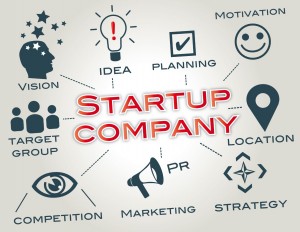Network Effects and Data Network Effects
Network effects influence the number of potential customers to become active customers. As we discussed in class, the basic model of a new startup product, there will be multiple equilibrium points, which can either be stable or unstable. In general, the lower equilibrium point, z1, is unstable, which means that any point near z1 will diverge away from that equilibrium, so if the initial potential customer is lower than z1 then the popularity will continuous to decrease to 0, a stable equilibrium point, and the product will die off. In the article, “Your Target Market Isn’t What it Used to Be”, Daniel Liebeskind discuss the similar notion of network effect and what should a startup set the range of the initial target audience of their product, in order to reach over z1, tipping point, then the popularity will converge to the high equilibrium point, z2, which is stable. Liebeskind discuss the wide known example of Facebook, which was also discussed in class, that it was first started only at Harvard University, and then when the audience is saturated, Facebook is open to other universities, and since the initial audience is already passed the tipping point, so the audience will further converge to cover most of the Universities. Further, the same process continuous when Facebook is open to everyone.
Network effects is a key factor that determines the success of Startups. As Liebeskind mentions that a startup with a well-analyzed strategy for publishing a new product will lead to higher potential of success. Another side of the network effect is applied to startups that involve with massive data, which the quality of the service/product is based on the size of the data source. For example, products with machine learning, artificially intelligent, making a prediction, or personalized recommendation, which how smart the service is, or how accurate the prediction is, are all based on the number of users contribute to the data. This is a directly proportional relationship, but for a startup, the size of data and number of users are limited. This creates an unpreventable problem since the new user will join if the service is smart, but before many users join the service can’t improve. This is an example of the classic chicken or egg causality dilemma. This issue was discussed in Matt Turck’s article, “The Power of Data Network Effects”, and some successful solutions that were used by companies was concluded. For instance, the company can build a free side app that can attract people with some tangible value, which at the same time collect data from users. I think this data trap is a clever way to build up the database for the mainline product, but a con of this method is that this will start another cycle of network effect procedure since the user will also be limited by the network effects. So the persuading value will need to be effective, to attract the user.
Based only the above examples, a statement can be draw about network effect is that it is a significant factor that influences any merchandise or service to burst into the market.
Sources:
https://startupdestiny.com/2012/09/25/your-target-market-isnt-what-it-used-to-be/
http://mattturck.com/2016/01/04/the-power-of-data-network-effects/

